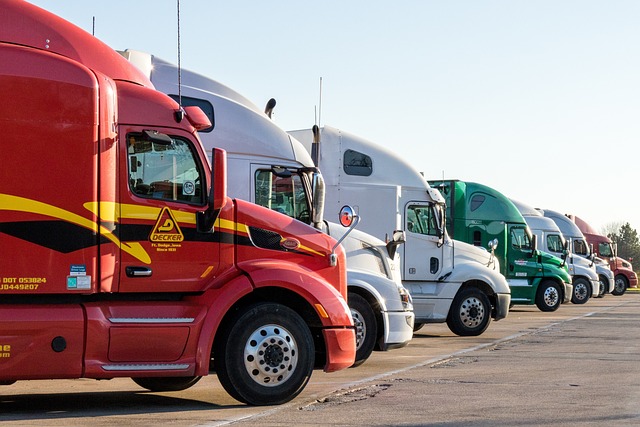Recovery straps, versatile off-road parts near me, are essential for safe rescue in challenging terrains. They come in various lengths and materials to suit different recovery needs. These tools secure vehicles in mud, sand, or snow, functioning as winching ropes, tow straps, or slings. Choosing the right strap for your vehicle depends on load capacity and material, with options for light, medium, and heavy-duty applications. For safe use, follow manufacturer instructions, maintain regular inspections, and store them properly. Accessing off-road parts near me ensures you have reliable recovery equipment ready for emergencies.
Recovery straps are versatile off-road rescue tools that can make a significant difference in challenging situations. This article explores their diverse applications beyond simple towing, guiding you through installation and use for optimal safety. We’ll also pinpoint the best places to buy high-quality off-road parts near you and share essential maintenance tips to ensure your recovery straps are always ready for action.
- Understanding Recovery Straps: Off-Road Rescue Tools
- Common Applications of Recovery Straps: More Than Just a Tow
- Types of Recovery Straps: Choosing the Right Fit for Your Vehicle
- How to Install and Use Recovery Straps Safely
- Where to Buy High-Quality Off-Road Parts Near You
- Maintenance Tips to Keep Your Recovery Straps Ready for Action
Understanding Recovery Straps: Off-Road Rescue Tools

Recovery straps are indispensable off-road parts near me, designed to be versatile rescue tools for vehicles navigating challenging terrains. These robust, high-strength straps come in various lengths and materials, each tailored to specific recovery scenarios. Whether you’re a seasoned off-roader or just starting your adventure, having reliable recovery straps in your kit is crucial for tackling unexpected obstacles.
They can be used to extract a vehicle stuck in mud, sand, or snow, providing a secure connection between rescue vehicles and the disabled car. Their multi-purpose design allows them to serve as winching ropes, tow straps, or even as makeshift slings for lifting components. With proper training and understanding of their capabilities, off-road enthusiasts can confidently navigate tough trails knowing they have the right tools at hand should an emergency arise.
Common Applications of Recovery Straps: More Than Just a Tow

Recovery straps are versatile offroad parts near me that have multiple applications beyond just towing. They are essential tools for anyone involved in outdoor activities or emergency situations. One common use is to assist in extricating vehicles from difficult terrain, such as mud, sand, or snowy conditions, where traditional towing methods might be impractical or dangerous.
Additionally, these straps find utility in various scenarios, including securing heavy loads on open-bed trucks or trailers, providing temporary repairs for broken down vehicles, and even assisting in search and rescue operations by facilitating the movement of equipment and personnel over challenging landscapes. Their durability and strength make them reliable companions for adventurers and off-road enthusiasts.
Types of Recovery Straps: Choosing the Right Fit for Your Vehicle

When it comes to choosing recovery straps for your vehicle, especially if you’re an offroad enthusiast, understanding the different types is key. There are three primary categories: light-duty, medium-duty, and heavy-duty. Light-duty straps are ideal for everyday driving and basic towing, typically made from durable nylon or polypropylene. Medium-duty options are a step up, constructed with stronger materials like polyester or Kevlar, suitable for heavier vehicles and more demanding situations. Heavy-duty straps, often crafted from high-tenacity wires or specialized synthetics, are designed to handle extreme weight and harsh environments, perfect for offroad parts near me enthusiasts who demand the best.
Selecting the right fit depends on your vehicle’s make, model, and towing capacity. Always consider factors like strap length, width, and break strength to ensure safety and effectiveness when in need of recovery assistance.
How to Install and Use Recovery Straps Safely

To install and use recovery straps safely, follow these steps:
1. Select the Right Straps: Ensure you choose high-quality recovery straps suitable for offroad parts near me from reputable suppliers. Check the load capacity and material to match your vehicle’s requirements.
2. Proper Installation: Read and understand the manufacturer’s instructions thoroughly before attaching the straps. Securely fasten one end of the strap to a robust, fixed point on your vehicle, such as a metal bracket or winch mount. Connect the other end to your recovery equipment, like a winch or cable. Ensure all connections are tight and secure to prevent accidents.
3. Use Correct Techniques: When deploying the straps during an off-road rescue, operate slowly and carefully. Avoid sudden movements that could cause strain on the straps or damage to your vehicle. Keep a firm grip on the free end of the strap to maintain control.
Where to Buy High-Quality Off-Road Parts Near You

When looking for high-quality off-road parts near you, several reputable options are available. Start by visiting specialized off-road stores in your area, where knowledgeable staff can guide you through the best products suited to your needs. Many such shops carry a wide range of recovery straps, essential for navigating tough terrains. Alternatively, explore online marketplaces and retailers that cater exclusively to off-road enthusiasts. These platforms often offer competitive prices and a vast selection, allowing you to compare different brands and read customer reviews before making a purchase. Additionally, joining local off-road communities or forums can provide valuable insights into where to find genuine parts and trusted sellers in your vicinity.
Maintenance Tips to Keep Your Recovery Straps Ready for Action

To keep your recovery straps ready for action, regular maintenance is key. Start by inspecting them frequently, checking for any signs of wear or damage. Offroad parts near me are easily accessible, so keeping a set of replacement components on hand can save you time and hassle if you need to repair small tears or breaks. Ensure the straps are clean and free from debris; dirt and grime can weaken the material over time. Consider using a mild detergent and a soft brush for a thorough cleaning.
Proper storage is another vital aspect. Store your recovery straps in a dry, cool place away from direct sunlight. Extreme temperatures and UV rays can degrade the material’s integrity. Before storing them, ensure they are completely dry to prevent mold or mildew buildup. Additionally, keep them off the ground to avoid any foreign objects that could puncture or damage the straps during storage.
Recovery straps are versatile off-road rescue tools that can make a significant difference in challenging situations. By understanding their various types and proper usage, you’ll be well-equipped to handle unexpected off-road obstacles. When choosing the right recovery strap for your vehicle, consider its application, weight capacity, and ease of installation. Regular maintenance is key to ensuring these essential parts remain reliable when you need them most. So, whether you’re tackling rough terrains or simply being prepared for the unexpected, investing in high-quality off-road parts near you, like recovery straps, can make all the difference.



